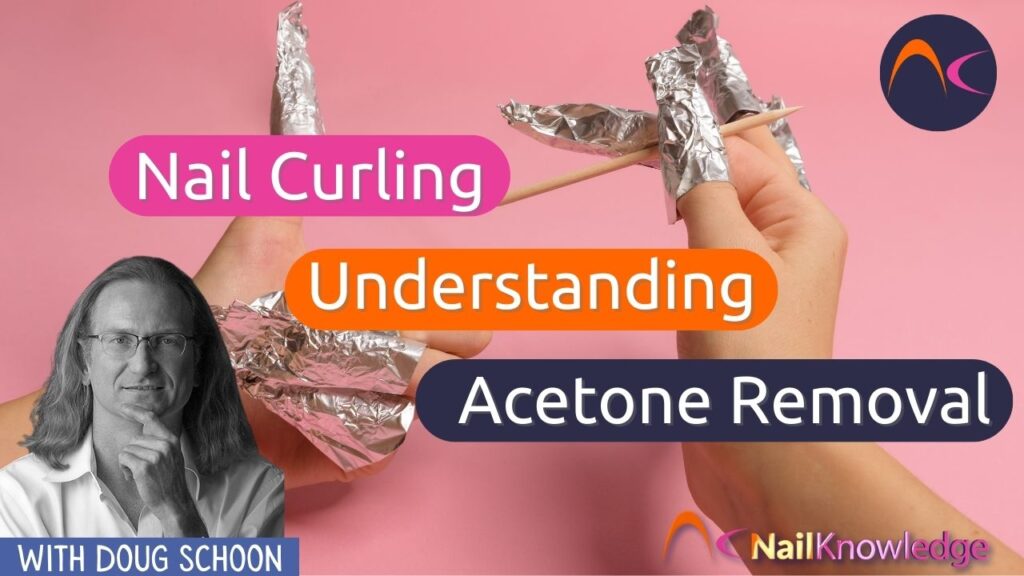As a nail technician, you strive to provide your clients with the best possible experience and results. However, encountering unexpected issues like nail curling after using acetone for removal can be frustrating for both you and your clients.
In this blog post, we’ll cover the reasons behind nail curling during acetone removal and explore effective strategies to prevent this from happening. Whether you’re a seasoned nail professional or just starting out, understanding the science behind nail reactions to acetone and implementing preventive measures can elevate your service quality and client satisfaction.
Cómo eliminar la acetona y rizar las uñas
El impacto del grosor de la placa ungueal y el contenido de agua
Supongo que las placas de la uña que se están curvando son más finas que las otras uñas. La acetona absorberá algo de agua, lo que reducirá el contenido de agua de la placa de la uña. La placa de la uña contiene normalmente cerca de 15% de agua. Incluso cuando se reduce el contenido de agua aunque sólo sea en un pequeño porcentaje, puede suponer una gran diferencia, especialmente en el caso de las placas de uñas finas.
Descubrir la ciencia: Estructura de la placa ungueal y dinámica de la humedad
Much of the water inside the nail plate is located between the layers of nail cells. The science is a bit unclear about how many layers make up a “typical” normal nail plate, but the latest research suggests that about 50 layers of nail cells is a good estimate.
Cuando el agua (también conocida como humedad) abandona la lámina ungueal, estas capas se acercan entre sí. Esto puede alterar ligeramente la forma de cualquier placa de la uña, en diversos grados. Las placas de uñas más finas son mucho más propensas a curvarse cuando pierden un poco de agua.
Cómo prevenir el encrespamiento de las uñas: Estrategias eficaces para la salud y el fortalecimiento de la lámina ungueal
The first thing I would try is to regularly perform hot oil manicures, once or twice per month and daily use of a high quality, penetrating nail oil. Doing so will increase the oil content of the nail plate, making it more difficult for water to leave the nail plate’s layers, and therefore slow down or prevent thinner nails from curling.
Also, avoid filing the nails even thinner than they already are. This is one of the biggest mistakes nail technicians make, over filing the top surface of the nail plate. This out-of-date technique is still taught by many nail schools and training courses. Respect the nail plate. The less this upper surface is filed, the better. It’s better to keep the nail plates thick and strong!


